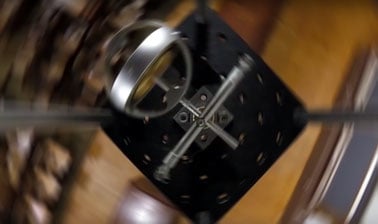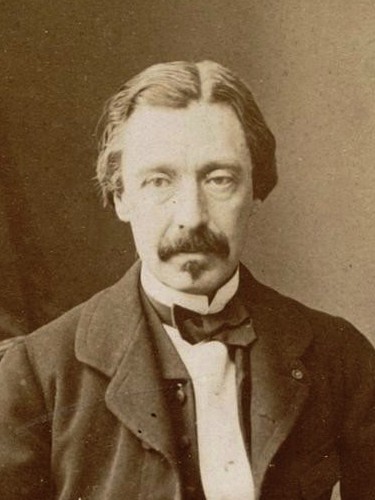The online simulations of waves on a string on this page help us to know in more detail the characteristics of this particular type of waves. We will see their physical characteristics and how are the different types of waves produced on a string.
What is a wave on a string
Waves on a string are a physical phenomenon that occurs when an initial perturbation, such as a hand shake, generates motion along an elastic medium. These types of waves, studied in wave physics, are characterized by properties such as wavelength, amplitude and propagation speed, which depend on factors such as the tension and mass of the string. Waves can be transverse, longitudinal or standing waves, and have practical applications in fields such as music and telecommunications
Wave generation on a string
A wave on a string is generated by an initial disturbance, which can be caused by an external source, such as a hand shaking the string, or by an initial motion applied to one end of the string. This disturbance creates a wave that propagates along the string.
Physical characteristics of waves on a string
Waves on a string are defined by three physical characteristics: their wavelength, their amplitude and their propagation speed.
Wavelength
Wavelength is the distance between two corresponding points of a wave. In the case of waves on a string, the wavelength refers to the distance between two successive crests or two valleys of the wave. It is represented by the Greek letter lambda (λ) and is measured in meters.
Amplitude of wave
The amplitude of a wave on a string is the maximum distance a particle on the string moves relative to its equilibrium position. In other words, it is the maximum height of the wave measured from the rest position of the string. The amplitude is related to the energy carried by the wave: the greater the amplitude, the greater the energy.
Velocity of propagation
The velocity of wave propagation in a string depends on the tension of the string and the linear mass of the string. The relationship between these factors is given by the wave equation: v = √(T/μ), where v is the propagation velocity, T is the string tension and μ is the linear mass of the string.
Types of waves on a string
Waves on a string can be of several main types: transverse, longitudinal and standing. Each type has distinctive characteristics that provide valuable information about the physical properties and behavior of the medium in which they propagate.
Transverse waves on a string
In transverse waves on a string, the particles in the string move perpendicular to the direction of wave propagation. This means that if the wave travels from left to right, the particles move up and down. This type of wave is common in vibrations of taut strings. Transverse waves on a string are visually characterized by their crests and valleys, which form their wavelength.
Longitudinal waves on a string
Longitudinal waves involve particle motion in the same direction in which the wave propagates. The particles in the string vibrate back and forth, creating zones of compression and rarefaction. In a string, longitudinal waves are studied mainly in theoretical contexts or simulations.
Standing waves on a string
Standing waves arise from the superposition of incident and reflected waves, forming interference patterns. In these cases, certain parts of the string, known as nodes, remain stationary while others, called antinodes, oscillate with maximum amplitude. This type of wave is crucial for understanding phenomena such as resonance in musical instruments and mechanical systems. Standing waves make it possible to clearly visualize wave properties such as wavelength and frequency.
Applications of waves on a string
The study of waves on a string has practical applications in various fields. For example, in music, instrument strings, such as those of a guitar or piano, generate waves that produce the different tones and frequencies. In addition, these waves are fundamental in the transmission of signals in telecommunications, as in optical fibers.
Explore the exciting STEM world with our free, online simulations and accompanying companion courses! With them you'll be able to experience and learn hands-on. Take this opportunity to immerse yourself in virtual experiences while advancing your education - awaken your scientific curiosity and discover all that the STEM world has to offer!
Simulations of waves on a string
- Lab
- Velocity
- Standing
Wave on a string
Explore the amazing world of waves! Even watch a string vibrate in slow motion. Move the end of the string and create waves, or adjust the frequency and amplitude of an oscillator.
File
Standing waves on a string
The last of our simulations of waves on a string, shows a standing wave on a string. See what happens when changing different parameters of the wave.
- Transverse
- Longitudinal
- Standing
Transverse waves on a string
This simulation shows the motion of particles in a medium when a transverse wave passes through. You can increase the amplitude of the motion and change the position of the green point.
Longitudinal waves on a string
This simulation shows the motion of particles in a medium when a longitudinal wave passes. The position of the green dot can be changed.
Giants of science
“If I have seen further, it is by standing on the shoulders of giants”
Isaac Newton

Johannes Kepler
–

Gottfried Wilhelm Leibniz
–
Become a giant


Mechanics, Part 2



Mechanics, Part 1



Dynamics and Control



AP® Physics 1 – Part 4: Exam Prep



Circuits for Beginners



AP® Physics 1 – Part 2: Rotational Motion



AP® Physics 1: Challenging Concepts































